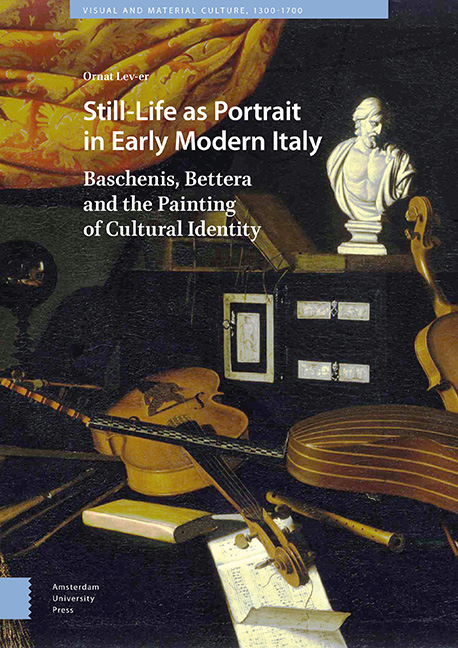 Still-Life as Portrait in Early Modern Italy
Still-Life as Portrait in Early Modern Italy Summary
Still Life with Musical Instruments, The Music of Silence, Baroque Sonnet. These are some of the names used in art history books, articles, and exhibition catalogues for dozens of paintings by two artists from northern Italy: Evaristo Baschenis (1617–1677) and Bartolomeo Bettera (1639–1699), both natives of Bergamo in the region of Lombardy. These paintings belong to the still-life genre, which was considered by their contemporaries to be the most inferior of genres – a view that has largely persisted, albeit with less tenacity, among modern scholars. The existing scholarship on Baschenis and Bettera views them as talented painters specializing in musical instruments, with expertise in creating perspectival arrangements, impressive structural compositions, and trompe l’oeil imagery. In addition, they are considered experts in the representation of the notion of vanitas through their references to music and the dust accumulated on the depicted musical instruments.
This study offers an additional interpretation: although still-life paintings are seemingly devoid of figures and narrative, Baschenis and Bettera's unique selection of objects and mode of representation paint a portrait of educated individuals versed in jurisprudence, literature, philosophy, poetry, music, and theatre. Their still-life compositions contain representations of curiosity, knowledge, and opinions regarding subjects which were central to the world of their contemporaries, and are filled with sophisticated allusions as well as implicit and explicit conceits, which weave a web of nuanced affinities. The musical instruments, sculptures, globes, and books in their works thus also paint a portrait of their creators, two artists residing in a small provincial city who endeavoured to participate in the cultural and theoretical discourse of their time through their artistic and intellectual creations. Ideas and themes traditionally found in the genres of historical, mythological, or religious painting are represented in a still-life context by these two painters, who extended the limits of this genre far beyond the accepted conventions of their time, as well as of subsequent centuries.
For a period of over 20 years, from 1645 to 1667, Baschenis enjoyed a monopoly in his area of speciality on the competitive Lombard market.
- Type
- Chapter
- Information
- Still-Life as Portrait in Early Modern ItalyBaschenis, Bettera and the Painting of Cultural Identity, pp. 21 - 30Publisher: Amsterdam University PressPrint publication year: 2019


